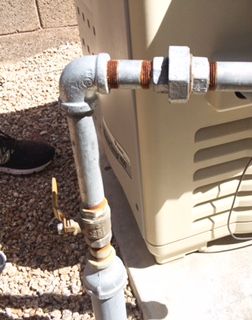The gas line pipes to our pool/spa gas heater are rusting. The heater and pool are less than two years old. They started rusting fairly soon after installation and I should have called the company sooner, but we've had other issues, and this got put on the back burner so to speak.
It seems to me of all the pipes that should not rust are ones carrying natural gas. Did my installer use the wrong type of pipes or should he have painted them? Seems crazy that within a few months of installation they started rusting. How concerned should I be? Having so many issues on my plate now, don't know if I should get some rustoleum type paint and paint the pipes and hope for the best or is this something the contractor should rectify? Our state requires that contractors stand behind their work for two years so they are still under warranty so to speak, but I only have a couple months left.
Here's a picture of the rusting gas pipes. Having trouble attaching photos so hope this works.

It seems to me of all the pipes that should not rust are ones carrying natural gas. Did my installer use the wrong type of pipes or should he have painted them? Seems crazy that within a few months of installation they started rusting. How concerned should I be? Having so many issues on my plate now, don't know if I should get some rustoleum type paint and paint the pipes and hope for the best or is this something the contractor should rectify? Our state requires that contractors stand behind their work for two years so they are still under warranty so to speak, but I only have a couple months left.
Here's a picture of the rusting gas pipes. Having trouble attaching photos so hope this works.

Last edited:

